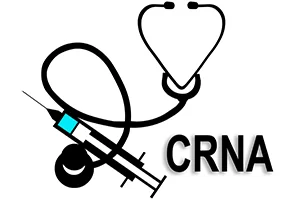The Section 199A qualified business income deduction is a wonderful offspring from the Tax Cuts and Jobs Act of 2017. It is certainly elusive when thinking about Section 199A deduction calculation given the problems with specified service trade or business, and the mixture of revenue sources. However, it is equally elusive when it comes to the optimization of the Section 199A deduction.
Given all that you’ve learned about Section 199A deduction limitations and phaseouts, such as W-2 and net business income, there is a magical percentage where your W-2 and net business income limits are the same. Huh? On one hand we don’t want salary too high because we pay too much in Social Security and Medicare taxes. On the other hand we don’t want salary too low because we are limiting the Section 199A deduction.
So we attempt to set these two limits equal to each other… just like the old fashioned solver plugin for MS Excel. “Hey Excel! What up?! Can you change a few variables for me until these two numbers are equal? By the way, it might be circular too. Good luck.”
You might have seen a number of 28.57%. This is practically correct, but technically incorrect since it does not factor in employer payroll taxes. We say practically correct since the difference is immaterial. Here is an analysis-
| Biz Income | 100,000 | 100,000 | 100,000 |
| Salary | 25,000 | 40,000 | 27,935 |
| Payroll Tax (Employer) @8% | 2,000 | 3,200 | 2,235 |
| Net Biz Income (NBI) | 73,000 | 56,800 | 69,830 |
| Section 199A W-2 Limit | 12,500 | 20,000 | 13,968 |
| Section 199A NBI Limit | 14,600 | 11,360 | 13,966 |
| Salary % | 25.0% | 40.0% | 27.9% |
We assumed that employer payroll tax portion is 8% of the salary. This includes Social Security, Medicare and unemployment taxes. This might be higher in some states, but let’s play along with 8%.
As you can see, the $25,000 salary (or 25%) results in Section 199A deduction being limited by W-2 amount. Next, the $40,000 salary results in Section 199A deduction being limited by net business income (NBI).
Using Excel’s solver plug-in, or manually changing the salary to bracket the two limits, results in a salary of $27,935 or 27.9%. This magical W-2 optimization for maximizing Section 199A deduction means that both W-2 and net business income limits are the same, and neither is specifically controlling.
Wait, there’s more to consider!
Reasonable Shareholder Salary
While Section 199A salary optimization is important, we must honor the overall theme of reasonable shareholder salary. We take a deep dive into reasonable salary calculations with all the IRS rules, tax court cases, methodologies and rules of thumb. This button will take you there-

Reasonable S Corp Salary
Lorem ipsum dolor sit amet, consectetur adipiscing elit, sed do eiusmod tempor incididunt it amet, conse ctetur adip iscing elit, sed do eiusmod tempor incididunt ut.
Most of our clients find themselves in the 35% to 45% range? What does this mean? This means shareholder salaries are about 35% to 45% of the net business income before salaries are paid out. In other words, if you earn $100,000 your salary would be $35,000 to $45,000. This is not a safe harbor calculation since it does not exist; it is simply an observation or survey of the payrolls we process for S corporations.
Ok. Take this one step further. If Section 199A deduction is optimized at 27.9% and a lot of our clients are around 35% to 45%, W-2 wages is not the limiting factor since 35% is greater than 27.9%, even in Canada.
But what about the Amazon retailer who can justify a salary that comes in at 20% of net business income? He or she will be limited by W-2 wages (assuming it is just one person on the payroll- the shareholder).
Cost of Increasing Shareholder Salary
So why not just bump up the shareholder salary to 27.9% every time? You can… sure… but let’s look at the cost to do that. Here’s another telling table-
| Net Business Income Before Salary | 200,000 |
| Old Reasonable S Corp Shareholder Salary | 40,000 |
| Section 199A Optimized Shareholder Salary | 55,800 |
| Section 199A W-2 Limit | 20,000 |
| Section 199A Net Business Income Limit | 31,360 |
| Lost Tax Ddeduction at 22% Income Tax Rate | 2,499 |
| Additional Social Security and Medicare Taxes* | 2,195 |
| Section 199A Optimization Benefit | 305 |
What did we do here? We assumed a $200,000 net business income before shareholder salary is paid. Let’s say we were paying $40,000 and we read this amazing article on WCG (formerly Watson CPA Group)’s website that suggests a salary of $55,800 would maximize Section 199A deduction. How does that convert into cash in pocket?
By having a salary too low we lost $2,499 assuming a 22% marginal tax rate. In other words, since our Section 199A deduction is limited by our W-2 of $40,000, we lost $2,499 in tax benefit. The calculation is 22% x the difference in Section 199A calculations between W-2 limit and net business income limit ($11,360 x 22% is $2,499).
But the cost of increasing reasonable S Corp shareholder salary to $55,800 also increased Social Security, Medicare and other payroll taxes by $2,195. A quick note of caution here- the employer portion was assumed to be 8% however, there is an income tax deduction since this 8% decreases the net business income and therefore reduces income taxes. In other words, 8% is truly 8% x (1 – 22%) or about 6.24%. We are getting deep into the weeds here, but you get the idea.
All these gyrations end up with $305 in your pocket. Not bad. A night at Gallagher’s on the house!
Also keep in mind that as salaries increase beyond the social security wage and unemployment wage caps, the payroll tax portion will change resulting in a different equilibrium percentage. This is why we suggest that the 28.57% number floating around out there on the internets, yes, plural, is practical but not exact.
If you are sitting there scratching your head and saying, “What is this Section 199A deduction you speak of?” you are in good hands. We have a massive article on the topic with some cool examples with Fred, Barney, Wilma and Mr. Slate-

Section 199A Deduction
Lorem ipsum dolor sit amet, consectetur adipiscing elit, sed do eiusmod tempor incididunt it amet, conse ctetur adip iscing elit, sed do eiusmod tempor incididunt ut.
Here is our summary of the major issues recently updated by the final regulations, rental property safe harbor (Notice 2019-7) and how all this crud affects S corporations-
Jason Watson, CPA is the Managing Partner of WCG (formerly Watson CPA Group), a business consultation and tax preparation firm, and is the author of Taxpayer’s Comprehensive Guide on LLC’s and S Corpswhich is available online.

Getting Started
Lorem ipsum dolor sit amet, consectetur adipiscing elit, sed do eiusmod tempor incididunt it amet, conse ctetur adip iscing elit, sed do eiusmod tempor incididunt ut.









